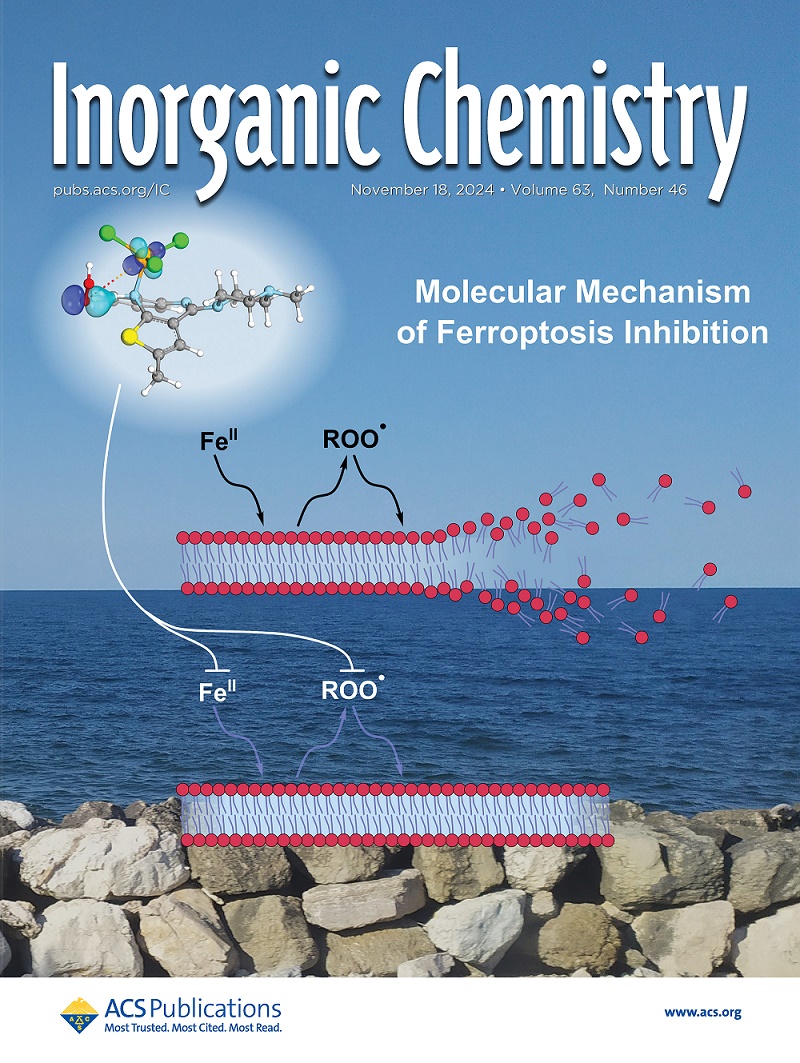59Co Thermal Sensitivity in Co(III) Trisdithiocarbamate Complexes
IF 4.3
2区 化学
Q1 CHEMISTRY, INORGANIC & NUCLEAR
引用次数: 0
Abstract
Understanding temperature sensitivity in magnetic resonance is key to novel molecular probes for noninvasive temperature mapping. Herein, we report an investigation of the effects of heavy-donor-atom dithiocarbamate ligands on the variable-temperature 59Co nuclear magnetic resonance (NMR) properties of six Co(III) complexes: Co(et2-dtc)3 (1), Co(bu2-dtc)3 (2), Co(hex2-dtc)3 (3), Co(pyrr-dtc)3 (4), Co(benzyl2-dtc)3 (5) and Co(2,6-dmpip-dtc)3 (6) (et2-dtc = diethyldithiocarbamate; bu2-dtc = dibutyldithiocarbamate; hex2-dtc = dihexyldithiocarbamate; pyrr-dtc = pyrrolidine-dithiocarbamate; benzyl2-dtc = dibenzyldithiocarbamate; and 2,6-dmpip-dtc = 2,6-dimethylpiperidine-dithiocarbamate). This study reveals 59Co chemical-shift temperature dependences of 1.17(3)–1.73(4) ppm/°C as a function of ligand substituents. Solid-state Raman spectroscopic analyses show that more Raman-active Co–S6 vibrational modes correlate to higher thermal sensitivities for these compounds, in line with our current model for temperature sensitivity. Short spin–lattice relaxation T1 times in solution (ca. 200 μs) were observed, and correlation with T2* times and solid-state 59Co NMR analyses reveal that the solution-phase line widths are attributable to quadrupolar relaxation processes, which ultimately lower temperature-sensing resolution.

求助全文
约1分钟内获得全文
求助全文
来源期刊

Inorganic Chemistry
化学-无机化学与核化学
CiteScore
7.60
自引率
13.00%
发文量
1960
审稿时长
1.9 months
期刊介绍:
Inorganic Chemistry publishes fundamental studies in all phases of inorganic chemistry. Coverage includes experimental and theoretical reports on quantitative studies of structure and thermodynamics, kinetics, mechanisms of inorganic reactions, bioinorganic chemistry, and relevant aspects of organometallic chemistry, solid-state phenomena, and chemical bonding theory. Emphasis is placed on the synthesis, structure, thermodynamics, reactivity, spectroscopy, and bonding properties of significant new and known compounds.
 求助内容:
求助内容: 应助结果提醒方式:
应助结果提醒方式:


